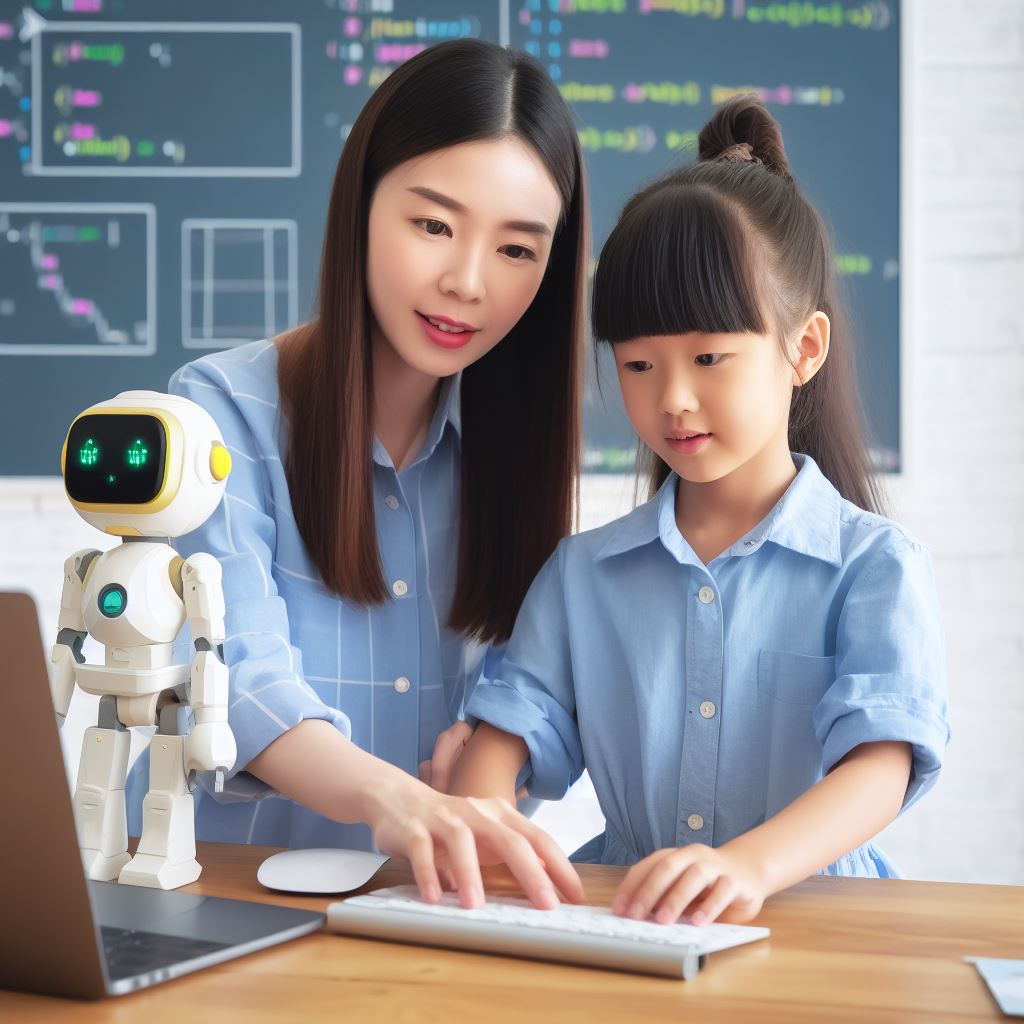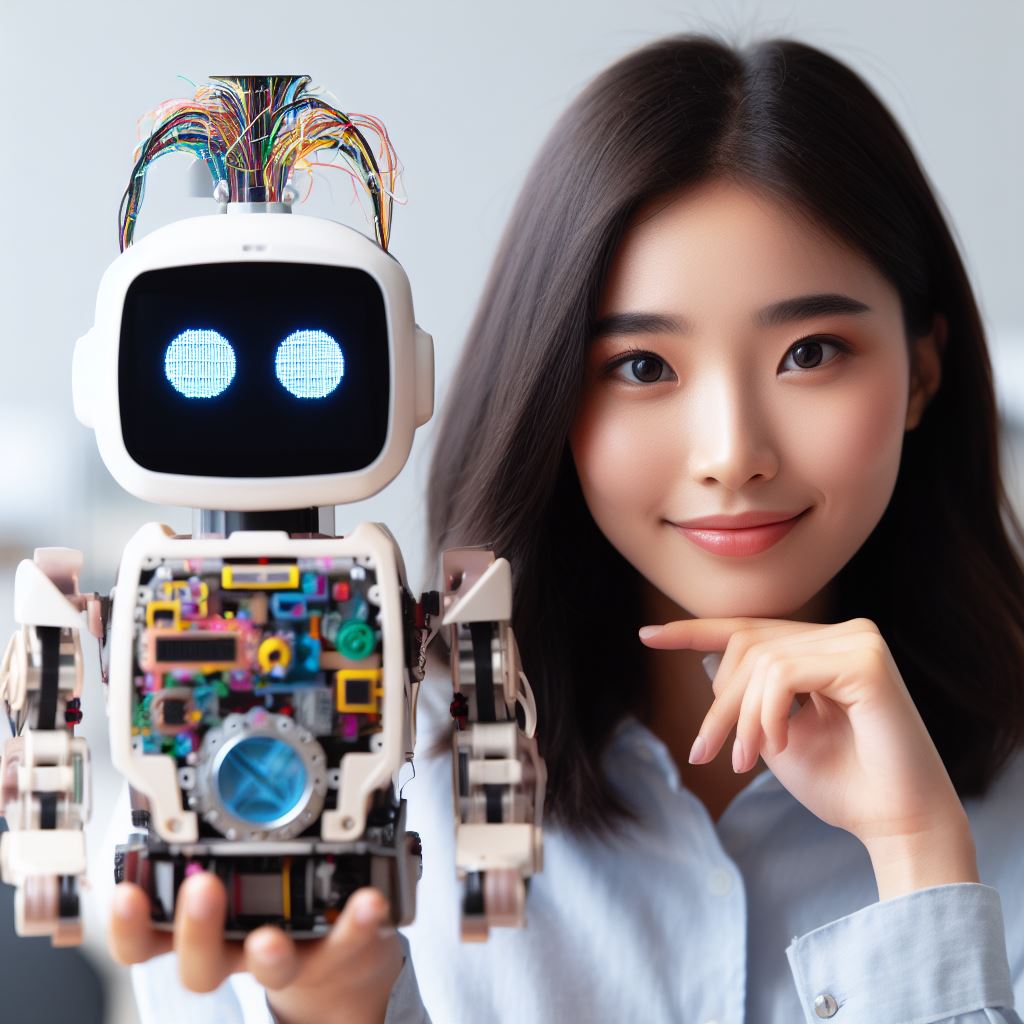Introduction
Let’s explore Coding Robots vs Traditional Learning.
In today’s rapidly advancing world, coding has become increasingly important for individuals of all ages.
The ongoing debate about the effectiveness of coding robots compared to traditional learning methods has caught the attention of educators, parents, and students alike.
The ability to understand and manipulate computer code has become a crucial skill in various industries such as technology, engineering, and finance.
As a result, the demand for coding education has surged in recent years.
However, the question of how to effectively teach coding remains a point of contention.
One approach that has gained popularity is the use of coding robots.
These interactive machines aim to make learning coding more engaging and accessible by combining physical and digital elements.
Proponents argue that coding robots provide a hands-on experience that can enhance problem-solving and critical thinking skills.
Traditional learning, like classroom instruction and textbooks, taught coding for decades.
Advocates highlight deeper comprehension, human interaction, and personalized instruction.
Despite the ongoing debate, there is no definitive answer to which method is more effective.
Each approach has strengths and weaknesses. Effectiveness depends on individual learners’ needs and preferences.
In the following sections, we will explore the pros and cons of coding robots and traditional learning methods.
We will analyze research, case studies, and personal experiences to inform educators, students, and parents.
Tech Consulting Tailored to Your Coding Journey
Get expert guidance in coding with a personalized consultation. Receive unique, actionable insights delivered in 1-3 business days.
Get StartedRead: Navigating CSS Frameworks: Bootstrap vs. Tailwind
Traditional Learning
In the context of coding education, traditional learning refers to the conventional method of teaching coding skills through in-person interactions and physical coding tools.
Advantages of Traditional Learning
- In-person interaction with teachers and peers enables students to ask questions and discuss coding concepts.
- Immediate feedback and clarification of doubts help students understand coding principles more effectively.
- Hands-on experience with physical coding tools enhances students’ understanding of coding concepts and promotes practical learning.
Drawbacks of Traditional Learning
- Limited availability and accessibility of teachers and resources can hinder the learning process for some students.
- There may be a potential lack of individualized attention and customization in traditional learning environments, making it challenging for some students to progress at their own pace.
- Reliance on standardized curriculum and teaching methods may not cater to the unique learning needs and preferences of all students.
Traditional coding education has strengths and weaknesses in the context of today’s tech-savvy world:
Advantages
- In-person interaction enables immediate feedback and meaningful discussions.
- Peer presence encourages collaboration and idea exchange.
- Hands-on experience with physical tools boosts comprehension and problem-solving.
Drawbacks
- Limited teacher availability and accessibility may hinder progress.
- Large student-to-teacher ratios challenge individualized support.
- Standardized curriculum may not cater to diverse learning needs, affecting motivation.
Basically, traditional coding education offers real-world interaction and hands-on experience but faces limitations in accessibility and customization.
As technology advances, coding robots and online platforms provide alternative avenues for learning, often complementing and sometimes surpassing traditional methods.
Read: Transition vs. Transformation in CSS: What’s the Difference?
Coding Robots
The Role of Coding Robots in Coding Education
Coding robots have emerged as a popular tool in coding education, providing learners with interactive and engaging learning experiences.
In this blog section, we will explore the advantages and drawbacks of coding robots, and their impact on traditional learning methods.
Advantages of Coding Robots
- 24/7 Availability and Accessibility: Coding robots offer round-the-clock accessibility, allowing learners to practice coding skills whenever they want. This flexibility promotes self-paced learning and enhances productivity.
- Individualized Learning Experiences: Coding robots provide personalized learning experiences tailored to each learner’s pace and skill level. This individualized approach boosts confidence and motivation among learners.
- Gamification and Interactive Learning Platforms: Coding robots often incorporate gamification elements, turning the learning process into a fun and interactive experience. This engages learners and encourages active participation.
Drawbacks of Coding Robots
- Lack of In-Person Interaction and Human Connection: While coding robots offer convenience, they lack the human element. Traditional learning methods allow face-to-face interactions, fostering collaboration and social skills development.
- Potential Limitations in Addressing Complex Coding Concepts: Coding robots may struggle to effectively teach complex coding concepts that require in-depth explanations. In such cases, hands-on teaching from instructors becomes invaluable.
- Dependence on Technology and Possible Technical Issues: Using coding robots involves relying on technology, which can lead to technical issues or malfunctions. This dependency can hinder the learning process and cause frustration.
Essentially, coding robots play a significant role in coding education by providing advantages such as 24/7 availability, individualized learning experiences, and gamification.
However, they also have drawbacks, including the lack of in-person interaction, limitations in teaching complex concepts, and dependence on technology.
It is important to strike a balance between utilizing coding robots and maintaining traditional learning methods to ensure a well-rounded coding education.
Read: How to Land Your First Entry-Level Coding Job in the USA

Comparison of Effectiveness
Comparison of Effectiveness: Coding Robots vs. Traditional Learning
Traditional learning has long been the go-to method for education, but with the rise of technology, coding robots are becoming increasingly popular.
This blog section will explore the effectiveness of both methods and present arguments, evidence, and counterarguments for each.
Build Your Vision, Perfectly Tailored
Get a custom-built website or application that matches your vision and needs. Stand out from the crowd with a solution designed just for you—professional, scalable, and seamless.
Get StartedEffectiveness of Traditional Learning
- Traditional learning provides a structured and disciplined approach to education, ensuring students develop good study habits and time management skills.
- Research shows that traditional learning fosters face-to-face interaction, allowing students to engage in discussions, ask questions, and receive immediate feedback from teachers.
- In-person learning environments provide a sense of community and socialization, enhancing interpersonal skills and collaboration among students.
- Traditional learning methods have been in place for centuries and have proven successful in imparting knowledge and building a foundation of essential skills.
Supporting Evidence for Traditional Learning
- Studies have demonstrated that students who undergo traditional learning possess strong critical thinking and problem-solving skills.
- Personal experiences of individuals who have excelled academically often attribute their success to traditional learning approaches.
- Traditional learning provides a comprehensive understanding of subjects, encouraging students to delve deeper into topics through research and reading.
- Teachers in traditional classrooms have the flexibility to tailor their teaching methods and strategies to meet the specific needs of their students.
Addressing Concerns about Traditional Learning
- Critics argue that traditional learning may favor rote memorization over creativity and innovation.
- Some concern has been raised about the lack of individualized attention and support for struggling students in traditional classrooms.
- The traditional education system may not always be adaptive enough to keep up with the rapidly changing needs of the modern workforce.
Effectiveness of Coding Robots
- Coding robots offer an interactive and immersive learning experience, capturing the interest of students and making learning more enjoyable.
- Research suggests that coding robots enhance critical thinking skills and problem-solving abilities by engaging students in hands-on activities.
- Coding robots provide instant feedback and allow for trial and error, enabling students to learn from their mistakes and iterate their solutions.
- The use of coding robots fosters creativity and encourages students to think outside the box when tackling coding challenges.
Supporting Evidence for Coding Robots
- Numerous studies have shown that students who learn coding through robots develop a deeper understanding of coding concepts.
- Personal experiences of individuals who have used coding robots highlight the increased motivation and enthusiasm for learning that these tools provide.
- Coding robots allow students to practice and apply coding skills in a real-world context, preparing them for future careers in technology.
Addressing Concerns about Coding Robots
- Critics argue that coding robots may restrict creativity and limit students’ exposure to a variety of coding languages and platforms.
- Some express concerns about the reliance on technology and the potential distraction it may pose in the learning process.
- The cost and accessibility of coding robots can be a barrier for some educational institutions, limiting their usage to a select few.
In essence, both traditional learning and coding robots have their own merits and can be effective educational methods.
Traditional learning provides a structured and time-tested approach, while coding robots offer hands-on and interactive experiences.
Leverage both methods for comprehensive learning. Blend traditional learning strengths with coding robots for well-rounded education.
Read: Debugging CSS: Common Problems and How to Fix Them
Conclusion
We have explored the debate between coding robots and traditional learning, and it is clear that both approaches have their merits.
It is important to emphasize the need for a balanced approach to coding education.
While coding robots offer a hands-on and interactive experience, traditional learning provides a deeper understanding of coding concepts.
Ultimately, the choice between these two methods should depend on individual preferences and circumstances.
Some learners may thrive with the use of coding robots, while others may prefer a more traditional classroom setting.
It is also worth noting that educational technology is constantly evolving, and advancements in this field can offer even more effective ways to learn coding in the future.
In summary, there is no one-size-fits-all answer to the question of whether coding robots or traditional learning is more effective.
It is essential to explore both options and find the most suitable approach for each individual.
As technology continues to progress, it is important to continuously adapt our methods of coding education.
The evolving nature of coding education necessitates a flexible mindset and a willingness to embrace new technologies that can enhance the learning experience.
Optimize Your Profile, Get Noticed
Make your resume and LinkedIn stand out to employers with a profile that highlights your technical skills and project experience. Elevate your career with a polished and professional presence.
Get Noticed



